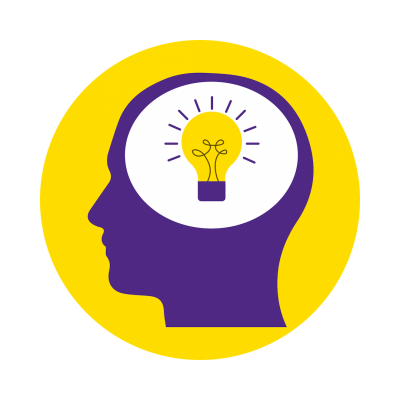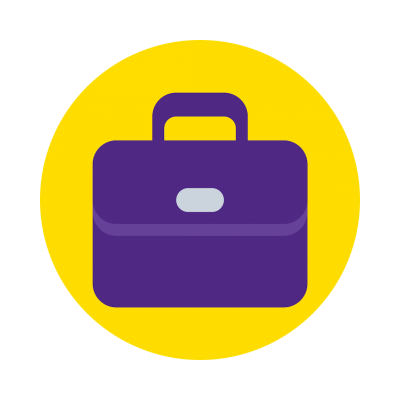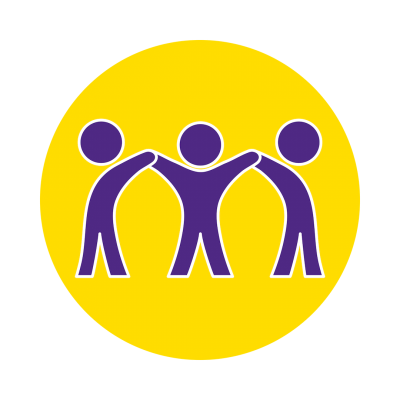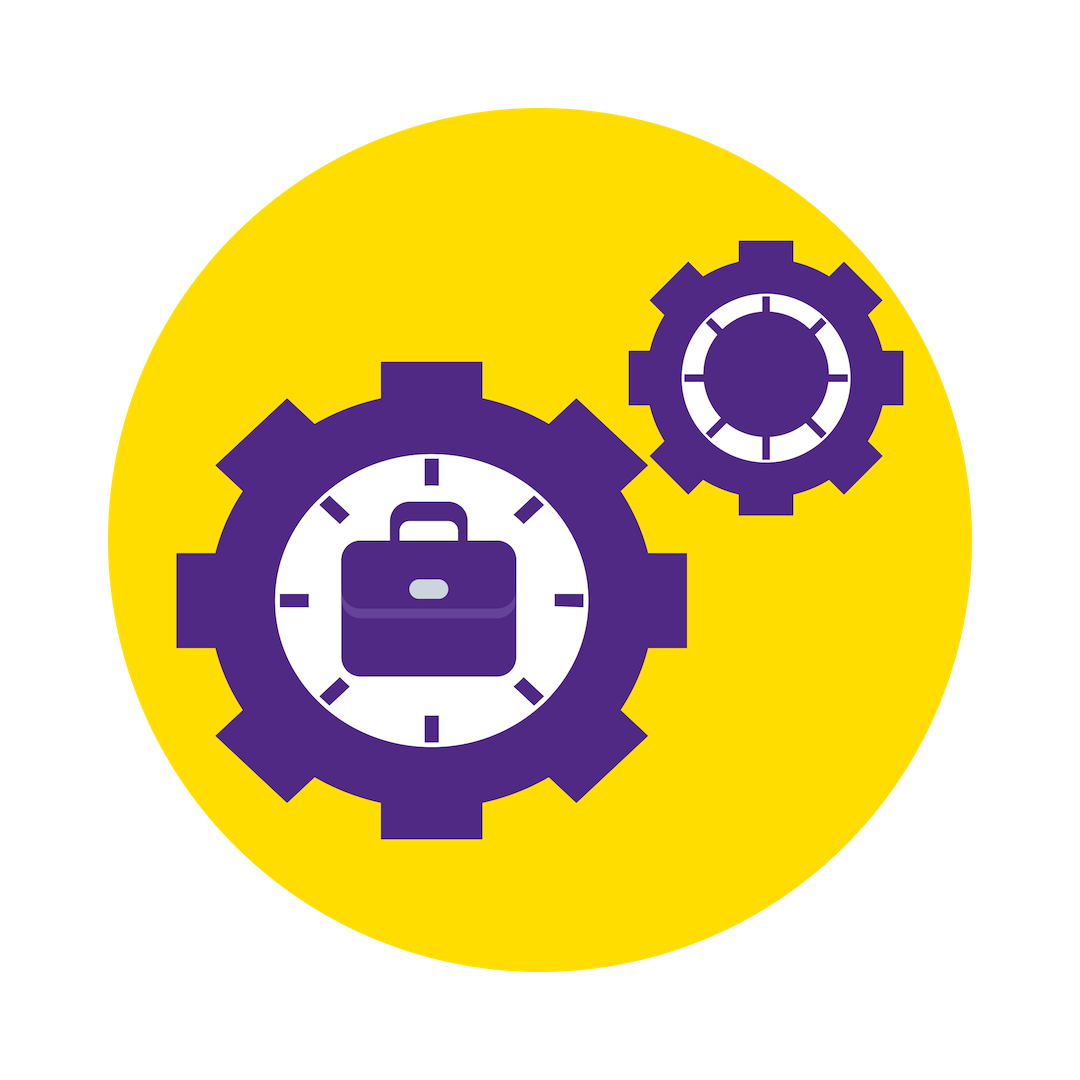Career Readiness
PRL helps students measure their career readiness as young professionals through the lens of the National Association of Colleges and Employer's (NACE) core competencies. Students can learn different skills and practices to exemplify these competencies by attending our events throughout their college career.
CHECK OUT OUR CAREER READY RESOURCES!

Mahalah Boone was awarded the Hall of Fame award for exemplifying the NACE 8 throughout her college career.
Core Competencies
Critical Thinking
 Exercise sound reasoning to analyze issues, make decisions, and overcome problems.
Able to obtain, interpret, and use knowledge, facts, and data in this process, and
may demonstrate originality and inventiveness.
Exercise sound reasoning to analyze issues, make decisions, and overcome problems.
Able to obtain, interpret, and use knowledge, facts, and data in this process, and
may demonstrate originality and inventiveness.
- » What does Critical Thinking look like?
- Make decisions and solve problems using sound, inclusive reasoning and judgment.
- Gather and analyze information from a diverse set of sources and individuals to fully understand a problem.
- Proactively anticipate needs and prioritize action steps.
- Accurately summarize and interpret data with an awareness of personal biases that may impact outcomes.
- Effectively communicate actions and rationale, recognizing the diverse perspectives and lived experiences of stakeholders.
- Multi-task well in a fast-paced environment.
Leadership

Leverage the strengths of others to achieve common goals, and use interpersonal skills to coach and develop others. Able to assess and manage his/her emotions and those of others; use empathetic skills to guide and motivate; and organize, prioritize, and delegate work.
- » What does effective Leadership look like?
- Inspire, persuade, and motivate self and others under a shared vision.
- Seek out and leverage diverse resources and feedback from others to inform direction.
- Use innovative thinking to go beyond traditional methods.
- Serve as a role model to others by approaching tasks with confidence and a positive attitude.
- Motivate and inspire others by encouraging them and by building mutual trust.
- Plan, initiate, manage, complete and evaluate projects.
Communication
 Articulate thoughts and ideas clearly and effectively in written and oral forms to
persons inside and outside of the organization. Has public speaking skills; is able
to express ideas to others; and can write/edit memos, letters, and complex technical
reports clearly and effectively.
Articulate thoughts and ideas clearly and effectively in written and oral forms to
persons inside and outside of the organization. Has public speaking skills; is able
to express ideas to others; and can write/edit memos, letters, and complex technical
reports clearly and effectively.
- » What does effective Communication look like?
- Understand the importance of and demonstrate verbal, written, and non-verbal/body language, abilities.
- Employ active listening, persuasion, and influencing skills.
- Communicate in a clear and organized manner so that others can effectively understand.
- Frame communication with respect to diversity of learning styles, varied individual communication abilities, and cultural differences.
- Ask appropriate questions for specific information from supervisors, specialists, and others.
- Promptly inform relevant others when needing guidance with assigned tasks.
Professionalism
 Demonstrate personal accountability and effective work habits, e.g., punctuality,
working productively with others, and time workload management, and understand the
impact of non-verbal communication on professional work image. Demonstrate integrity
and ethical behavior, acts responsibly with the interests of the larger community
in mind, and is able to learn from his/her mistakes.
Demonstrate personal accountability and effective work habits, e.g., punctuality,
working productively with others, and time workload management, and understand the
impact of non-verbal communication on professional work image. Demonstrate integrity
and ethical behavior, acts responsibly with the interests of the larger community
in mind, and is able to learn from his/her mistakes.
- » What does Professionalism look like?
- Act equitably with integrity and accountability to self, others, and the organization.
- Maintain a positive personal brand in alignment with organization and personal career values.
- Be present and prepared.
- Demonstrate dependability (e.g., report consistently for work or meetings).
- Prioritize and complete tasks to accomplish organizational goals.
- Consistently meet or exceed goals and expectations.
- Have an attention to detail, resulting in few if any errors in their work.
- Show a high level of dedication toward doing a good job.
Teamwork
 Build collaborative relationships with colleagues and customers representing diverse
cultures, races, ages, genders, religions, lifestyles, and viewpoints. Able to work
within a team structure, and can negotiate and manage conflict.
Build collaborative relationships with colleagues and customers representing diverse
cultures, races, ages, genders, religions, lifestyles, and viewpoints. Able to work
within a team structure, and can negotiate and manage conflict.
- » What does Teamwork look like?
- Listen carefully to others, taking time to understand and ask appropriate questions without interrupting.
- Effectively manage conflict, interact with and respect diverse personalities, and meet ambiguity with resilience.
- Be accountable for individual and team responsibilities and deliverables.
- Employ personal strengths, knowledge, and talents to complement those of others.
- Exercise the ability to compromise and be agile.
- Collaborate with others to achieve common goals.
- Build strong, positive working relationships with supervisor and team members/coworkers.
Career & Self Development
 Identify and articulate one's skills, strengths, knowledge, and experiences relevant
to the position desired and career goals, and identify areas necessary for professional
growth. Able to navigate and explore job options, understands and can take the steps
necessary to pursue opportunities, and understands how to self-advocate for opportunities
in the workplace.
Identify and articulate one's skills, strengths, knowledge, and experiences relevant
to the position desired and career goals, and identify areas necessary for professional
growth. Able to navigate and explore job options, understands and can take the steps
necessary to pursue opportunities, and understands how to self-advocate for opportunities
in the workplace.
- » What does Career & Self Development look like?
- Show an awareness of own strengths and areas for development.
- Identify areas for continual growth while pursuing and applying feedback.
- Develop plans and goals for one’s future career.
- Professionally advocate for oneself and others.
- Display curiosity; seek out opportunities to learn.
- Assume duties or positions that will help one progress professionally.
- Establish, maintain, and/or leverage relationships with people who can help one professionally.
- Seek and embrace development opportunities.
- Voluntarily participate in further education, training, or other events to support one’s career.
Technology
 Leverage existing digital technologies ethically and efficiently to solve problems,
complete tasks, and accomplish goals. Demonstrate effective adaptability to new and
emerging technologies.
Leverage existing digital technologies ethically and efficiently to solve problems,
complete tasks, and accomplish goals. Demonstrate effective adaptability to new and
emerging technologies.
- » What does Technology look like?
- Navigate change and be open to learning new technologies.
- Use technology to improve efficiency and productivity of their work.
- Identify appropriate technology for completing specific tasks.
- Manage technology to integrate information to support relevant, effective, and timely decision-making.
- Quickly adapt to new or unfamiliar technologies.
- Manipulate information, construct ideas, and use technology to achieve strategic goals.
Source: NACE Center

